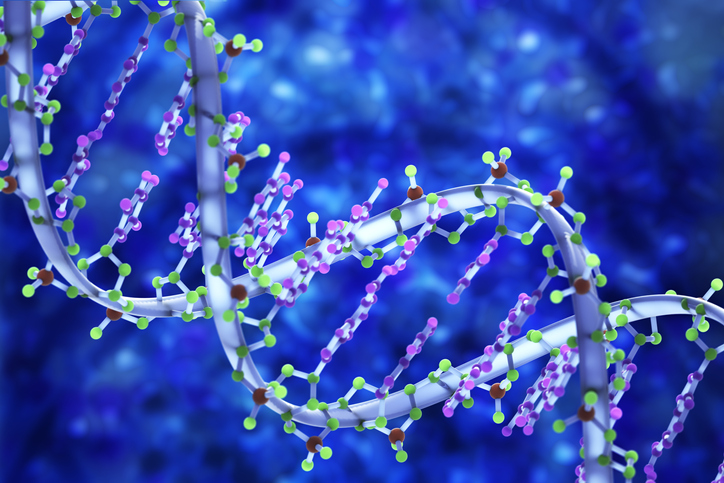
The next wave of genomic medicine is shaping up to include gene-editing therapies that do their work inside the patient, and Pfizer and Bayer each have new alliances that will broaden their reach to include these in-vivo approaches.
Pfizer announced on Monday a new partnership with Beam Therapeutics, a Cambridge, Massachusetts-based biotech developing therapies based on its base-editing technology. To begin the alliance, Pfizer is paying its new partner $300 million up front. Beam will handle all of the research up to the point of drug candidate selection. The agreement spans four years and may be extended up to one additional year.
Beam’s base-editing technology enables the company to change single letters in the genetic code. The biotech’s approach uses messenger RNA and lipid nanoparticles to deliver its base editors to target organs. Edits are made without breaking the double-stranded DNA. Base-editing enables more precise edits precise compared to other methods, such as using CRISPR Cas9, which results in double-stranded breaks that increase the risk of making unwanted changes to the genetic code.
Pfizer and Beam did not specify disease targets other than to say the alliance covers rare genetic diseases of the liver, muscle, and central nervous system. Programs currently in development at Beam are not included in the new pact. If Pfizer exercises its option to license a drug candidate developed under the alliance, it will be responsible for further development work, including taking the therapies through regulatory review and commercialization.
Beam could earn up to $1.35 billion in milestone payments if Pfizer exercises options on all three targets covered under the partnership. The biotech would also receive royalties from Pfizer’s sales of any commercialized products produced by the alliance. Beam does have the opportunity to share in the development and potential commercialization of the partnered therapeutic candidates. The pact grants the biotech a right to opt into a global co-development and co-commercialization agreement on one of the programs at the end of Phase 1/2 clinical trials. Beam would have to pay an option exercise fee; the split of the development, commercialization costs, and profits breaks down to 65% to Pfizer and 35% to Beam.

A Deep-dive Into Specialty Pharma
A specialty drug is a class of prescription medications used to treat complex, chronic or rare medical conditions. Although this classification was originally intended to define the treatment of rare, also termed “orphan” diseases, affecting fewer than 200,000 people in the US, more recently, specialty drugs have emerged as the cornerstone of treatment for chronic and complex diseases such as cancer, autoimmune conditions, diabetes, hepatitis C, and HIV/AIDS.
“We have a strong history in developing gene replacement therapies for rare diseases, and we see this collaboration with Beam as an opportunity to advance the next generation of gene editing therapies—an exciting scientific frontier—potentially leading to transformation for people living with rare genetic diseases,” Mikael Dolsten, Pfizer chief scientific officer and president, worldwide research, development and medical, said in the announcement of the deal.
Pfizer joins other companies that have inked R&D alliances with Beam, including Apellis Pharmaceuticals and Verve Therapeutics.
Meanwhile, Bayer hopes to add in-vivo gene editing therapies to its pipeline through an agreement with Mammoth Biosciences. Brisbane, California-based Mammoth started out as a developer of CRISPR Cas9-based diagnostics and that work is still part of its pipeline. But the company has gone on to add new CRISPR cutting enzymes; the company has said the Cas14 and CasPhi enzymes enable it to explore therapeutic applications. The smaller size of both enzymes means a therapy has more capacity to carry additional cargo, CEO Trevor Martin told MedCity News last year.
Bayer announced Monday that it is paying $40 million up front to begin a collaboration that enables the German company to use Mammoth’s CRISPR technologies to develop in vivo gene-editing therapies. The agreement covers five preselected in vivo indications. The companies did not disclose the indications, other than to say the agreement’s first focus is on liver diseases. Depending on the progress of programs that stem from the alliance, Mammoth could earn more than $1 billion in milestone payments. Speaking during a presentation Monday at the annual J.P. Morgan HealthCare Conference, Marianne De Backer, head of strategy, business development and licensing at Bayer, said that partnerships with Mammoth and others enable her company to address unmet medical needs in a different way, and with technology that Bayer does not have in house.
Bayer has agreed to pay for the research of the therapies covered under the agreement and will also pay its new partner royalties if any medicines from the pact reach the market. In addition, Bayer and Mammoth have agreed to explore ex vivo therapies on a non-exclusive basis.
Image: 4X-image, Getty Images














